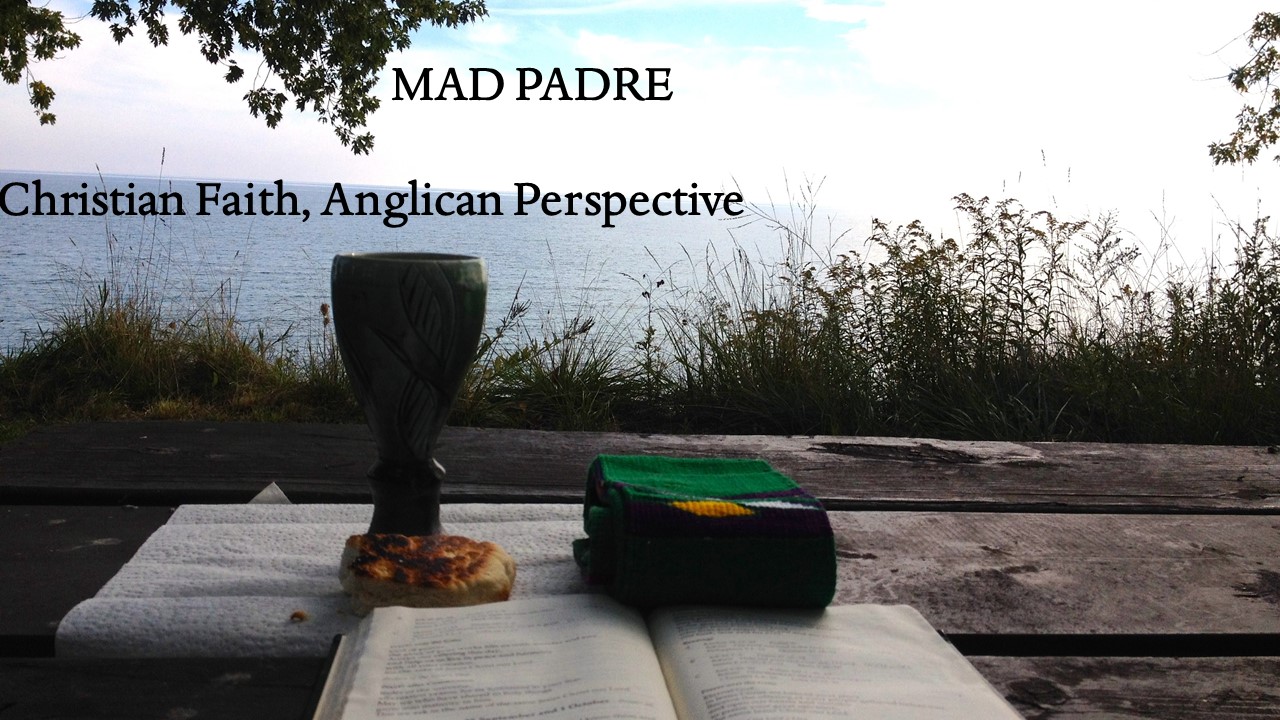This book review appeared in the Summer edition of the quarterly journal (well, newsletter, really) of the Canadian Armed Forces Anglican Military Ordinariate , the body of Anglican chaplains in the CAF. The newsletter is pretty rubbish and prints any old thing (I can say that, I’m the editor). MP+
A Point of Balance: The Weight and Measure of Anglicanism
Ed. Martyn Percy and Robert Bork Slocum, Moorhouse, 2013
Anyone who has served with the RCAF will likely know the adage about the venerable Sea King helicopter, that it is not one aircraft but rather “several thousand parts flying in close formation”. Much the same thing has been said about Anglicanism. In one of the first in this collection of essays, Martyn Percy tells a story about the Anglican theologian Henry Scott Holland who, while watching a flock of starlings flying over Cuddeson College, “remarked how like the Anglican Church they were. Nothing, it seemed, kept the flock together - and yet the birds moved as one, even though they were all apart and retained their individual identity” (20).
This slim book of essays, part of the Canterbury Studies in Anglicanism series, is accessible and challenging. The book’s contributors are British and American clergy and faculty, and all of them ask essentially the same question, namely, what keeps the constituent parts of Anglicanism flying in close formation? This question is especially urgent since, as Percy notes, much has changed in the century since Holland watched the starlings over Cuddesdon. Today the “flock” of Anglicanism contains birds of more than one type. “Evolution - through cultural and theological diversity - has meant that many Anglican provinces have evolved to ‘fit’ their contexts, and the ultimate diversity of the species clearly threatens its unity” (20).
An example of this diversity is found in A. Katherine Grieb’s essay on scripture. She notes that scripture, long seen as the “glue” of Anglicanism, is read and understood differently throughout the Communion. Ugandan Anglicans, who largely practise a very pentecostal version of Christianity, hear the bible within the African oral tradition as “a deposit of authoritative and ‘universally’ recognized African like sayings” and through the filter of the African Eastern Revival (32). Thus a text like Deuteronomy 28:22a,27-28 is heard by many as a description of AIDS as a divine punishment for sin. There are thus profound hermeneutical differences separating Anglicans in Uganda and other African countries from their counterparts in the first world. Hermeneutics as well as Uganda’s church history and post colonialism thus drive many Ugandan Anglican’s understanding of sexual ethics. Grieb suggests that process of “scriptural reasoning”, first adopted by scholars of Christianity, Islam and Judaism, might be a way forward and away from further fracturing of the Communion along North/South lines. The principles of scriptural reasoning include a respect for the sacredness of the other’s texts, a recognition of differences, and a shared sense of hospitality and “God’s purpose of peace among all” (40).
In a similar vein, Tom Hughson proposes a rethinking of mission as “receptive ecumenism” in which Anglican churches in the North find ways to listen to those churches in the South which hear the gospel amidst suffering rather than affluence, and thus act as bridge, helping a post-Christendom North to understand the South and to hear the gospel anew. Other writers explore reconciliation as spirituality (Philip Sheldrake), and koinonia as a gift of the Spirit (Robert D. Hughes). In a section on praxis, Simon Taylor reflects on the changing nature of the parish in the contemporary Church of England, and Paula Nesbitt offers hard data on clerical and lay ministry and suggestions on how ministry models might adapt to the needs of the contemporary church.
All of these essays are undergirded by a faith in what one scholar has called the “collective mind” of the church, and a belief that the Spirit “leads the Church into further penetration of the Truth” which will become apparent over time. This process of leading is not rapid or easy, and the authors all recommend the virtues of patience, hospitality, and attentive listening to one another as our best resources and hope in this difficult and confusing time. All the book’s contributors agree that our unity is desirable, indeed, commanded of us, and that no Anglican should say to another, “I have no need of you”. In the words of Robert Runcie, as quoted by Percy, “Politeness, integrity, restraint, diplomacy, patience, a willingness to listen, and above all, not to be ill-mannered - these are the things that enable the Anglican Communion to cohere”.


No comments:
Post a Comment